This article dives into the Fujifilm Instax Mini 8. And you’ll find out everything you need to know about it. If you’re looking for a fun, instant camera, this should be one you consider!
What is the Fujifilm Instax Mini 8?
Fujifilm’s short description, ‘Shoot and see the results printed right away’, says everything about the main idea for instant cameras. In 2009, Fujifilm dropped the Instax series, which changed the instant camera market. Their uniqueness is that they print what you shoot immediately. This also means that you cannot replicate the images. The Fujifilm Instax Mini series is the most popular among the instant cameras. It is compact and does not need anything besides film and two batteries. It comes with a hand strap that is the same color as your camera. For the Instax Mini 8, Fujifilm did everything to create a stylish and iconic camera.
Who is the Fujifilm Instax Mini 8 For?
The short answer is literally everyone. It’s most popular among young people and children, but my parents and grandparents also enjoy using mine. Sometimes couples buy it to use at weddings, making long-lasting memories directly on the scene. The Fujifilm Instax Mini 8 is a portable, light, and fun camera that is easy to use. Also, it’s relatively inexpensive. It also does not require any specific equipment or previous experience in photography.
Fujifilm Instax Mini 8 Key Features
Let’s see why the Instax Mini 8 is an excellent choice among instant cameras.
Lens
It’s a compact camera, which means that you are not able to change the lens. You press the button next to the lens, and it pops out. This is also how you turn on your camera. To turn it off, you push back the lens. It’s nice that you don’t need a lens cap. When it’s turned off, the camera’s body protects the lens, and a cover closes over it. This lens is a 60mm prime lens. It’s fun that everyone has to move to frame the scene perfectly. It enhances the feeling that we can only use one frame for one shot. We have to invest some time in shooting.
Film
The Fujifilm Instax Mini series use a special film size. The image size is 6.2 x 4.6 cm, and with the frame, it’s 8.6 x 5.4 cm. You can put the Instax Mini Instant film into any Instax Mini cameras. The basic Fujifilm Instax Mini film has a sensitivity of ISO 800. These films are also easy to use, but they are expensive. They come in packages of 10 sheets. The film loading is easy and user-friendly. You have to open the door on the back of your Instax Mini and put it in. When you open the door, you are going to see a yellow mark within your camera. You can see the same on the film box. Just place the two signs together, and your film is in its place. Now, close the door and start shooting. When you are shooting, the films come out from the top of the camera. It takes about 1.5 – 2 minutes to develop. Sometimes I find that the colors get deeper after a little extra time. The film-feed-out is automatic, so you don’t have to worry about film advancing. There is an exposure counter window on the back of the camera, so you can see how many shots you have left. Also, you can buy films with different kinds of frames. Some of them are colorful or even patterned. The frames don’t just look nice, but you can label the images by writing or drawing on them. You can even buy monochrome film to take stunning black and white images. You have to pay attention not to use your films at extremely high or low temperatures. The best is to use them at room temperature, but they work between 5 and 40°C.
Focusing and Framing
There is a minimum focusing distance of sixty centimetres. It means that the camera won’t focus on subjects that are closer to the lens than 60 cm. The Instax Mini 8 is a rangefinder camera. That means that it allows zone focusing. You can’t set your focus automatically. You have to move the camera to find focus. Also, you have to rely more or less on the distances suggested by your camera’s lens. It won’t be able to focus closer than 60 cm. Using a rangefinder means that the viewed image is not exactly what will be exposed on your picture. There is a viewfinder that is offset from the view through the lens, as they are a few centimetres from each other. As you are looking ‘through the camera’, you will not see exactly what the lens sees. This makes composing the image harder.
Light Metering and Shooting
When you turn on the camera, you will see a little red/orange light on the exposure setting dial. You can see two holes above the lens. This is the light meter, which automatically measures the amount of light and suggests a setting to use. It does so by turning on that little light. There are five options you can choose from, and the light is next to the one you should use. The first option is for indoor photos, primarily for low light conditions. The ‘cloudy’ option is for outdoor photos with ambient light but low light conditions. The ‘sunny’ and the ‘very sunny’ options are also for outdoors and scenes with a lot of light. With the high-key mode, you can decide to have a brighter image, so it will overexpose it. The image quality is fluctuant. The light metering doesn’t always seem to be precise. Among bright lighting conditions, my images usually come out overexposed. And the darker light conditions result in underexposed images. So sometimes it isn’t easy to catch the perfect lighting. This can be because Fujifilm releases films with 800 ISO sensitivity to favour users who prefer to shoot in low-light. When you practice enough, you will know when the camera’s choice isn’t the best. When this happens, you can easily choose another setting. It’s best to have your subjects close to the camera. As the images will not contain too many details, it’s better to shoot more visible subjects. There is a built-in flash, which is on and flashes every time. No matter how much light the light meter senses. It’s important to pay attention not to cover the light meter or the flash. Make sure to rotate the ring and set the proper metering. Otherwise, you’ll don’t understand why you didn’t get the correct exposure. Besides these, it’s quite easy to learn how to use the Instax Mini 8.
Body and Handling
The Fujifilm Instax Mini 8 is a relatively small camera. It’s 116 x 118 x 88 mm and 307 g without batteries. It comes in 7 fun colors, so everyone can find the one that fits them. The colorful ones look a little bit like toys, but the black and the white are more elegant. It’s a bit hard to hold it in one hand, as there isn’t much to hold on to. Also, the matte plastic makes you feel like you can drop it anytime. Luckily it’s easy to attach straps. One of the things I wasn’t satisfied with is the placement of the viewfinder. Usually, it’s on the left side of cameras as most of us use the right eye to look into it. With being on the right of the Instax Mini, my nose always hits the back of the camera, so it’s not too comfortable. Of course, we usually don’t spend a whole day shooting with these. But still, it can be bothersome. Also, it feels a bit odd that the shutter button is on the front of the camera. This makes sense, as the film comes out on top of it, so there is no place for the button too. It’s just something I needed to get used to. Overall, it seems to be a hardwearing camera, as it’s made of solid plastic. It doesn’t have many moving elements. I’ve been using my Instax Mini 8 for four years now and haven’t had any problems with it yet.
Accessories
The Instax Mini 8 comes with a hand strap, which is not the best quality. It can get worn out after a while if you use it a lot, but it definitely does its job. Not only is the appearance of these cameras fun, but you can buy cases in any color you could imagine. You can also buy little albums that you can collect your photos in. These are quite cheap, and it feels so great to flip through them.
The Best Instax Mini 8 Alternatives
Other instant cameras can compete with the Instax Mini 8. The Instax Mini 9 comes with a little mirror next to the lens and a close-up lens. You can attach this to the lens and make images of subjects closer than 60cm. The Instax Mini 11 comes with interchangeable shutter button stickers. Also, it allows a focusing distance of 30 cm. The manual switch is missing because the 11 comes with a fully automatic exposure system. This won’t let you override the camera’s suggestions and decide which mode you want to choose. You can choose other film formats, for example, the Instax Wide 300. This works with bigger films, which are better for showing more detail. If you would prefer a square format, you can decide to buy, for example, an Instax Square SQ1. These cameras come with a more cornered design. The main difference is in the shape of the film they use.
Conclusion
I’m quite satisfied with the Instax Mini 8. This is a long-lasting camera you buy (or get it as a present), and it grows to your heart. Of course, it has some disadvantages. For example, the camera is cheap, but the instant film is quite expensive. You can buy them in bulk, which makes them more affordable. This is something you cannot avoid if you choose to shoot with an instant film camera. There are quality issues regarding the images, which might be fixed in the newer models. Instant film cameras give you great freedom, as you most likely won’t expect to get the perfect shot. They are primarily for fun. However, I don’t feel that I missed anything by using this one for years, instead of always buying new ones. II would recommend buying one before they ran out of stock. They are cheaper than the fresh ones, so if you want to try the experience of instant photography, the Instax Mini 8 is a great choice.
Scores
- Quality of base features compared to the competition, 20
- Extra features, 20
- Value, 20
- Handling and Ergonomics, 12
- Construction and Durability, 15 Total: 87 To be a master of Instant Photography, you will need to master composition. Follow our Intuitive Composition course and capture stunning compositions every day!


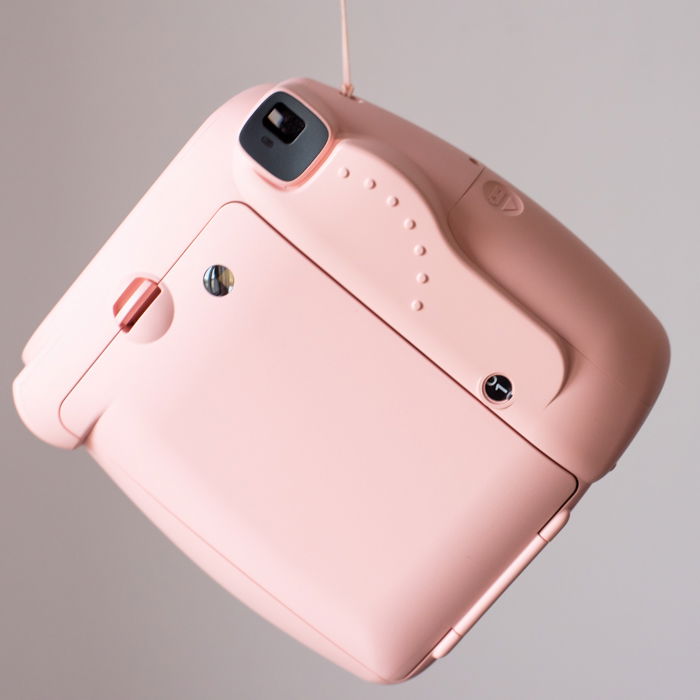
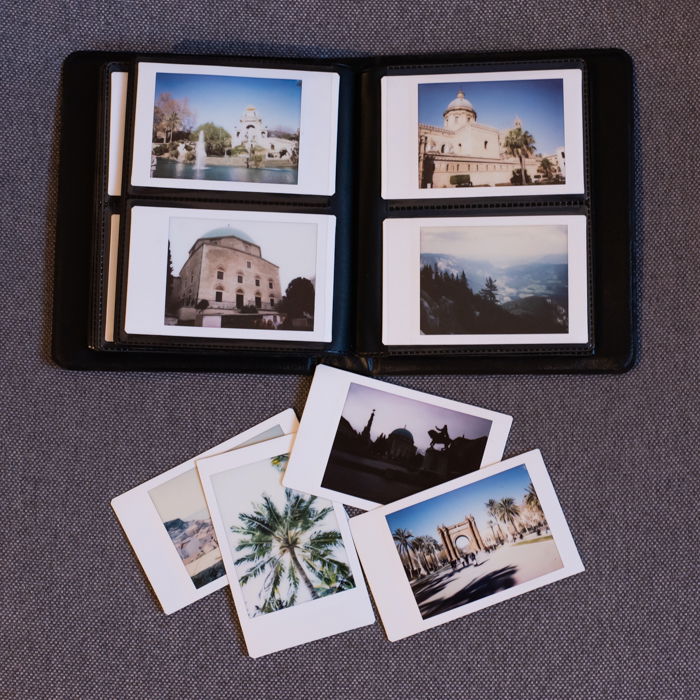
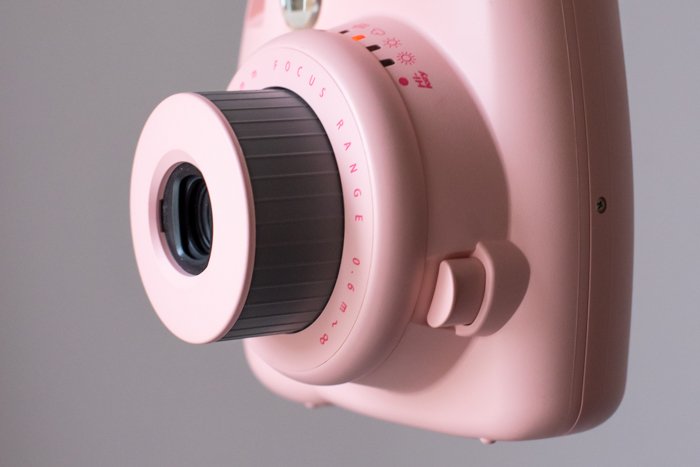
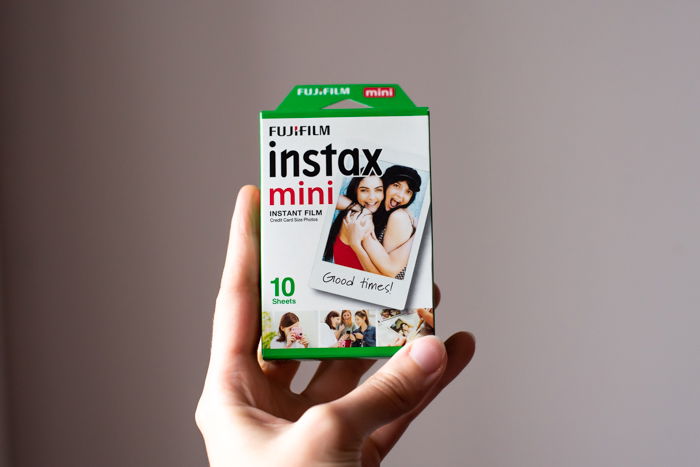
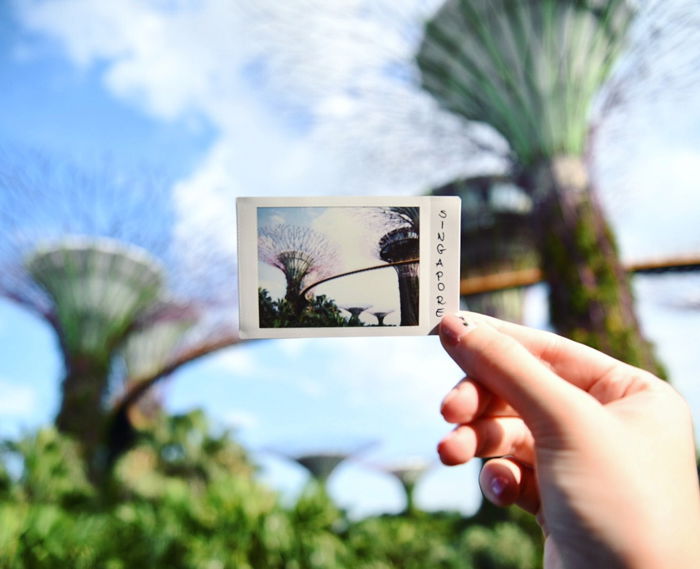
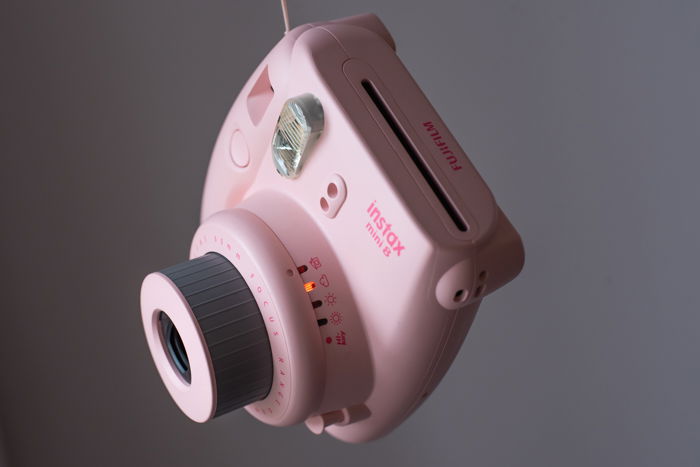
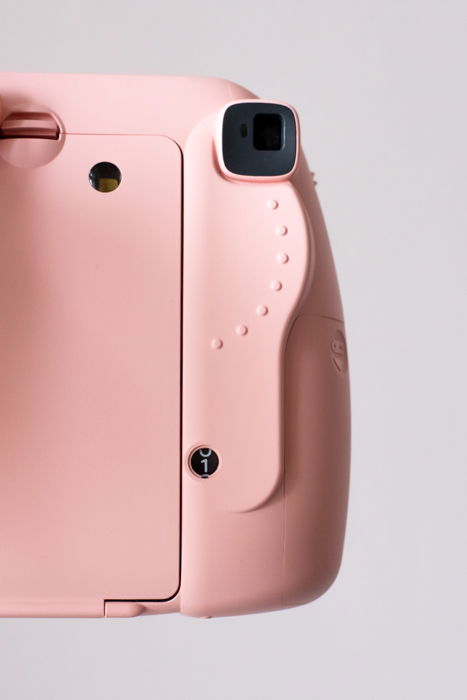
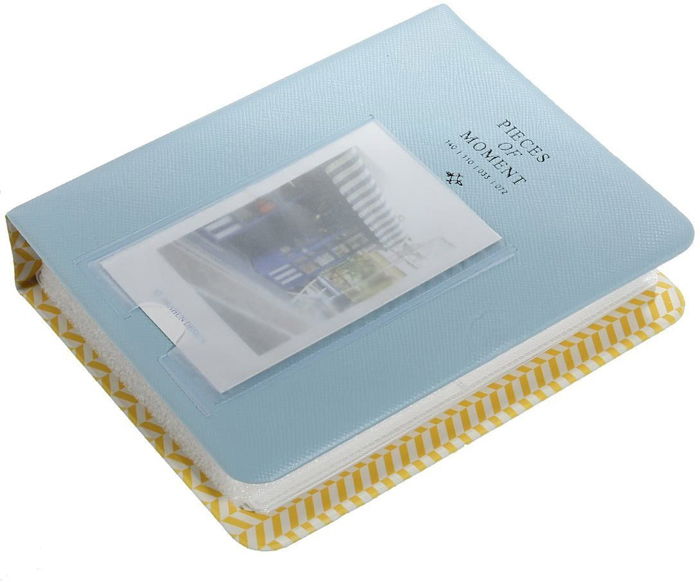
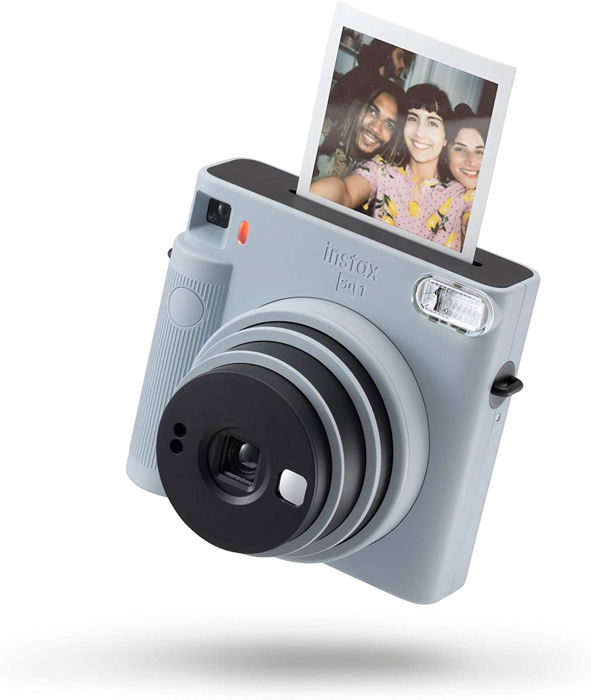


title: “Fujifilm Instax Mini 8 Review 2023 Instant Camera " ShowToc: true date: “2023-02-04” author: “Martha Sanders”
This article dives into the Fujifilm Instax Mini 8. And you’ll find out everything you need to know about it. If you’re looking for a fun, instant camera, this should be one you consider!
What is the Fujifilm Instax Mini 8?
Fujifilm’s short description, ‘Shoot and see the results printed right away’, says everything about the main idea for instant cameras. In 2009, Fujifilm dropped the Instax series, which changed the instant camera market. Their uniqueness is that they print what you shoot immediately. This also means that you cannot replicate the images. The Fujifilm Instax Mini series is the most popular among the instant cameras. It is compact and does not need anything besides film and two batteries. It comes with a hand strap that is the same color as your camera. For the Instax Mini 8, Fujifilm did everything to create a stylish and iconic camera.
Who is the Fujifilm Instax Mini 8 For?
The short answer is literally everyone. It’s most popular among young people and children, but my parents and grandparents also enjoy using mine. Sometimes couples buy it to use at weddings, making long-lasting memories directly on the scene. The Fujifilm Instax Mini 8 is a portable, light, and fun camera that is easy to use. Also, it’s relatively inexpensive. It also does not require any specific equipment or previous experience in photography.
Fujifilm Instax Mini 8 Key Features
Let’s see why the Instax Mini 8 is an excellent choice among instant cameras.
Lens
It’s a compact camera, which means that you are not able to change the lens. You press the button next to the lens, and it pops out. This is also how you turn on your camera. To turn it off, you push back the lens. It’s nice that you don’t need a lens cap. When it’s turned off, the camera’s body protects the lens, and a cover closes over it. This lens is a 60mm prime lens. It’s fun that everyone has to move to frame the scene perfectly. It enhances the feeling that we can only use one frame for one shot. We have to invest some time in shooting.
Film
The Fujifilm Instax Mini series use a special film size. The image size is 6.2 x 4.6 cm, and with the frame, it’s 8.6 x 5.4 cm. You can put the Instax Mini Instant film into any Instax Mini cameras. The basic Fujifilm Instax Mini film has a sensitivity of ISO 800. These films are also easy to use, but they are expensive. They come in packages of 10 sheets. The film loading is easy and user-friendly. You have to open the door on the back of your Instax Mini and put it in. When you open the door, you are going to see a yellow mark within your camera. You can see the same on the film box. Just place the two signs together, and your film is in its place. Now, close the door and start shooting. When you are shooting, the films come out from the top of the camera. It takes about 1.5 – 2 minutes to develop. Sometimes I find that the colors get deeper after a little extra time. The film-feed-out is automatic, so you don’t have to worry about film advancing. There is an exposure counter window on the back of the camera, so you can see how many shots you have left. Also, you can buy films with different kinds of frames. Some of them are colorful or even patterned. The frames don’t just look nice, but you can label the images by writing or drawing on them. You can even buy monochrome film to take stunning black and white images. You have to pay attention not to use your films at extremely high or low temperatures. The best is to use them at room temperature, but they work between 5 and 40°C.
Focusing and Framing
There is a minimum focusing distance of sixty centimetres. It means that the camera won’t focus on subjects that are closer to the lens than 60 cm. The Instax Mini 8 is a rangefinder camera. That means that it allows zone focusing. You can’t set your focus automatically. You have to move the camera to find focus. Also, you have to rely more or less on the distances suggested by your camera’s lens. It won’t be able to focus closer than 60 cm. Using a rangefinder means that the viewed image is not exactly what will be exposed on your picture. There is a viewfinder that is offset from the view through the lens, as they are a few centimetres from each other. As you are looking ‘through the camera’, you will not see exactly what the lens sees. This makes composing the image harder.
Light Metering and Shooting
When you turn on the camera, you will see a little red/orange light on the exposure setting dial. You can see two holes above the lens. This is the light meter, which automatically measures the amount of light and suggests a setting to use. It does so by turning on that little light. There are five options you can choose from, and the light is next to the one you should use. The first option is for indoor photos, primarily for low light conditions. The ‘cloudy’ option is for outdoor photos with ambient light but low light conditions. The ‘sunny’ and the ‘very sunny’ options are also for outdoors and scenes with a lot of light. With the high-key mode, you can decide to have a brighter image, so it will overexpose it. The image quality is fluctuant. The light metering doesn’t always seem to be precise. Among bright lighting conditions, my images usually come out overexposed. And the darker light conditions result in underexposed images. So sometimes it isn’t easy to catch the perfect lighting. This can be because Fujifilm releases films with 800 ISO sensitivity to favour users who prefer to shoot in low-light. When you practice enough, you will know when the camera’s choice isn’t the best. When this happens, you can easily choose another setting. It’s best to have your subjects close to the camera. As the images will not contain too many details, it’s better to shoot more visible subjects. There is a built-in flash, which is on and flashes every time. No matter how much light the light meter senses. It’s important to pay attention not to cover the light meter or the flash. Make sure to rotate the ring and set the proper metering. Otherwise, you’ll don’t understand why you didn’t get the correct exposure. Besides these, it’s quite easy to learn how to use the Instax Mini 8.
Body and Handling
The Fujifilm Instax Mini 8 is a relatively small camera. It’s 116 x 118 x 88 mm and 307 g without batteries. It comes in 7 fun colors, so everyone can find the one that fits them. The colorful ones look a little bit like toys, but the black and the white are more elegant. It’s a bit hard to hold it in one hand, as there isn’t much to hold on to. Also, the matte plastic makes you feel like you can drop it anytime. Luckily it’s easy to attach straps. One of the things I wasn’t satisfied with is the placement of the viewfinder. Usually, it’s on the left side of cameras as most of us use the right eye to look into it. With being on the right of the Instax Mini, my nose always hits the back of the camera, so it’s not too comfortable. Of course, we usually don’t spend a whole day shooting with these. But still, it can be bothersome. Also, it feels a bit odd that the shutter button is on the front of the camera. This makes sense, as the film comes out on top of it, so there is no place for the button too. It’s just something I needed to get used to. Overall, it seems to be a hardwearing camera, as it’s made of solid plastic. It doesn’t have many moving elements. I’ve been using my Instax Mini 8 for four years now and haven’t had any problems with it yet.
Accessories
The Instax Mini 8 comes with a hand strap, which is not the best quality. It can get worn out after a while if you use it a lot, but it definitely does its job. Not only is the appearance of these cameras fun, but you can buy cases in any color you could imagine. You can also buy little albums that you can collect your photos in. These are quite cheap, and it feels so great to flip through them.
The Best Instax Mini 8 Alternatives
Other instant cameras can compete with the Instax Mini 8. The Instax Mini 9 comes with a little mirror next to the lens and a close-up lens. You can attach this to the lens and make images of subjects closer than 60cm. The Instax Mini 11 comes with interchangeable shutter button stickers. Also, it allows a focusing distance of 30 cm. The manual switch is missing because the 11 comes with a fully automatic exposure system. This won’t let you override the camera’s suggestions and decide which mode you want to choose. You can choose other film formats, for example, the Instax Wide 300. This works with bigger films, which are better for showing more detail. If you would prefer a square format, you can decide to buy, for example, an Instax Square SQ1. These cameras come with a more cornered design. The main difference is in the shape of the film they use.
Conclusion
I’m quite satisfied with the Instax Mini 8. This is a long-lasting camera you buy (or get it as a present), and it grows to your heart. Of course, it has some disadvantages. For example, the camera is cheap, but the instant film is quite expensive. You can buy them in bulk, which makes them more affordable. This is something you cannot avoid if you choose to shoot with an instant film camera. There are quality issues regarding the images, which might be fixed in the newer models. Instant film cameras give you great freedom, as you most likely won’t expect to get the perfect shot. They are primarily for fun. However, I don’t feel that I missed anything by using this one for years, instead of always buying new ones. II would recommend buying one before they ran out of stock. They are cheaper than the fresh ones, so if you want to try the experience of instant photography, the Instax Mini 8 is a great choice.
Scores
- Quality of base features compared to the competition, 20
- Extra features, 20
- Value, 20
- Handling and Ergonomics, 12
- Construction and Durability, 15 Total: 87 To be a master of Instant Photography, you will need to master composition. Follow our Intuitive Composition course and capture stunning compositions every day!












